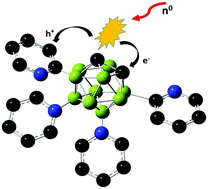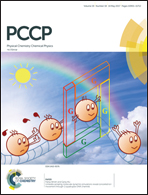Carborane-based polymers: a novel class of semiconductors with tunable properties
Abstract
Semiconducting boron carbides based on cross-linked carborane (B10C2H12) icosahedra, developed several decades ago, are of significant interest in a variety of emerging areas, including photocatalysis, spintronics, and especially neutron detection. These materials, however, display generally poor charge carrier mobility, high defect levels and other properties that pose significant drawbacks. A class of nanocomposite carborane-based materials has recently been developed, that addresses many of these issues. The films consist of polymerized mixtures of carboranes and aromatic species, including benzene, 1,4-diaminobenzene, pyridine or aniline. In these materials, electronic states corresponding to the aromatic moiety appearing near the top of the valence band, and states associated with the carborane moiety occupy the bottom of the conduction band. Band gap energies are substantially reduced relative to films without aromatic content. Transport measurements also indicate that charge scattering lifetimes are substantially enhanced in aromatic/carborane films compared to corresponding films without aromatic content. This combination of superior electron–hole separation, narrower band gaps, and superior charge scattering lifetimes, yields markedly enhanced charge collection in neutron voltaics studies compared to conventional carborane-derived boron carbides. The implications of these enhanced properties for neutron detection and other applications are discussed.

- This article is part of the themed collection: PCCP Perspectives


 Please wait while we load your content...
Please wait while we load your content...